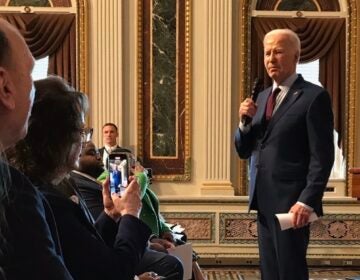Major upgrades underway for Delaware Memorial Bridge [video + photos]
Listen-

-
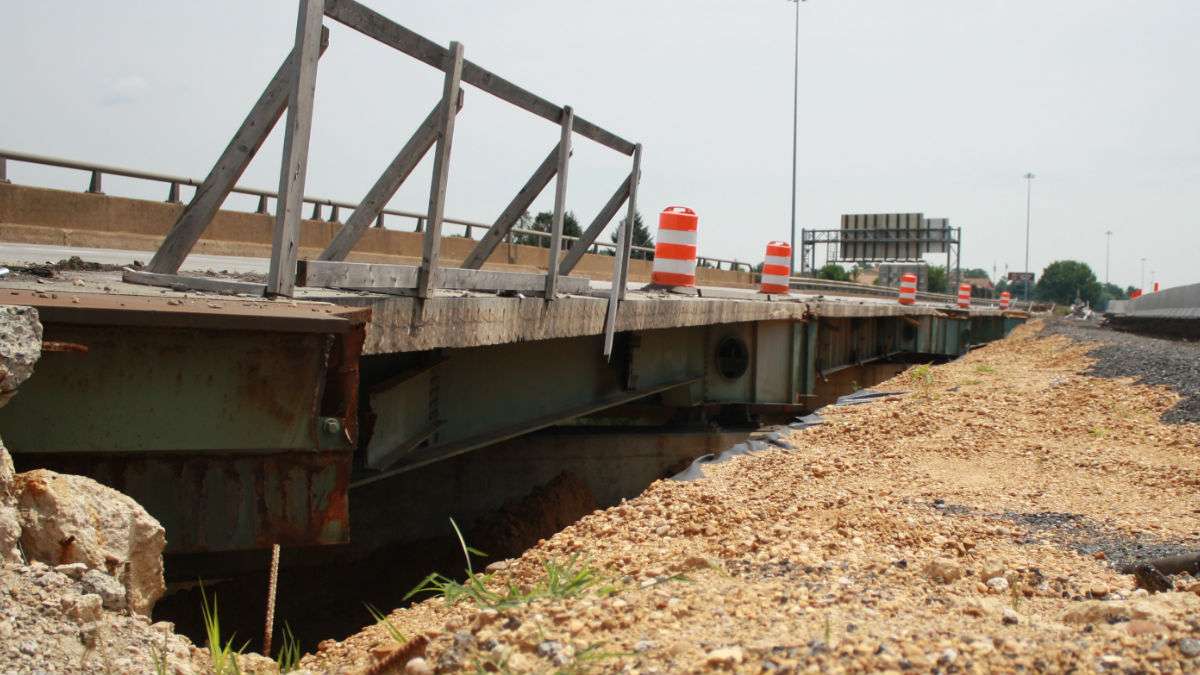
-

-
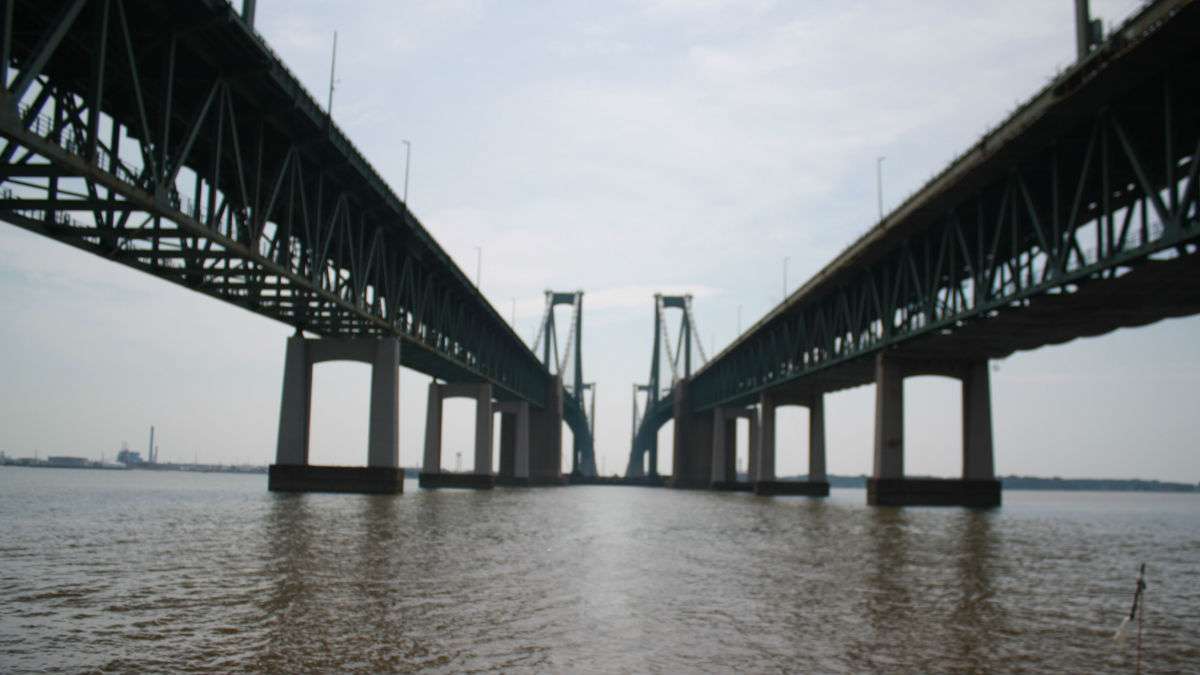
Delaware Memorial Bridge (Mark Eichmann/WHYY)
-

-
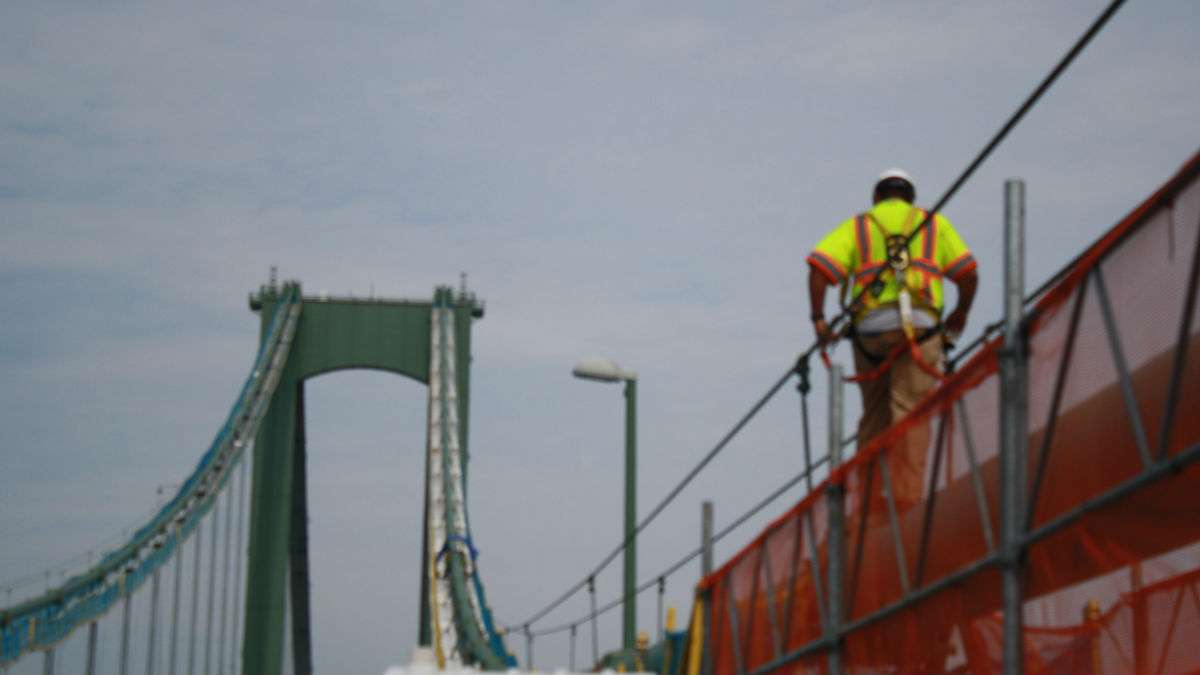
-
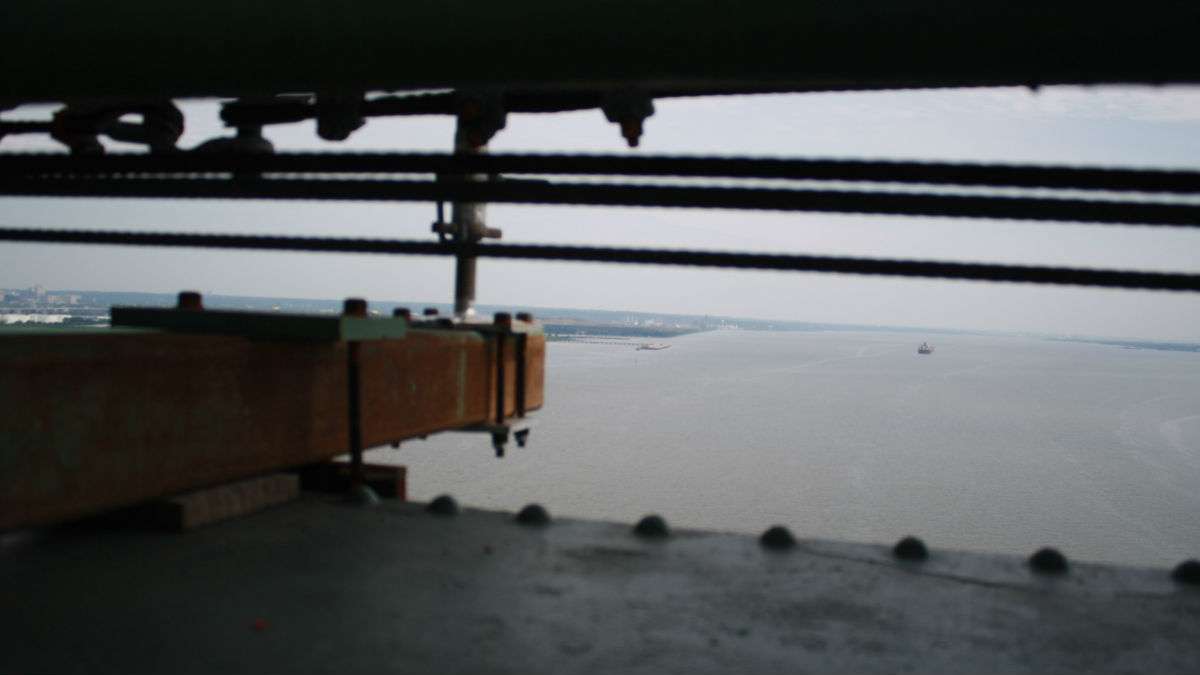
-
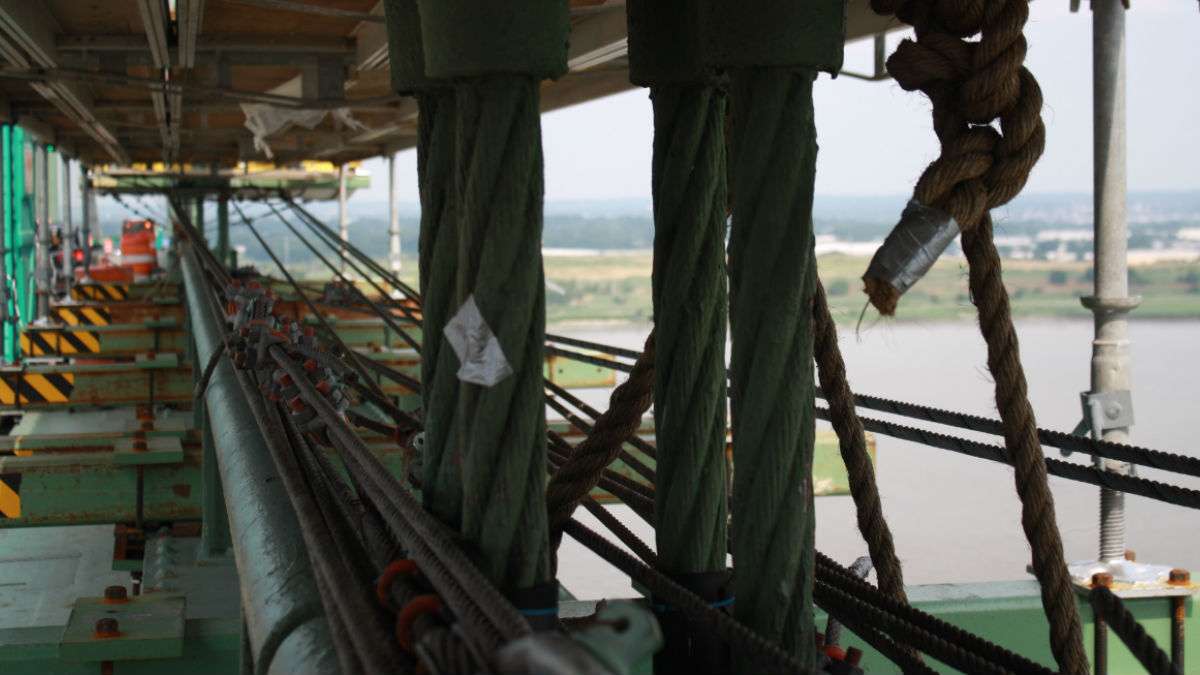
-
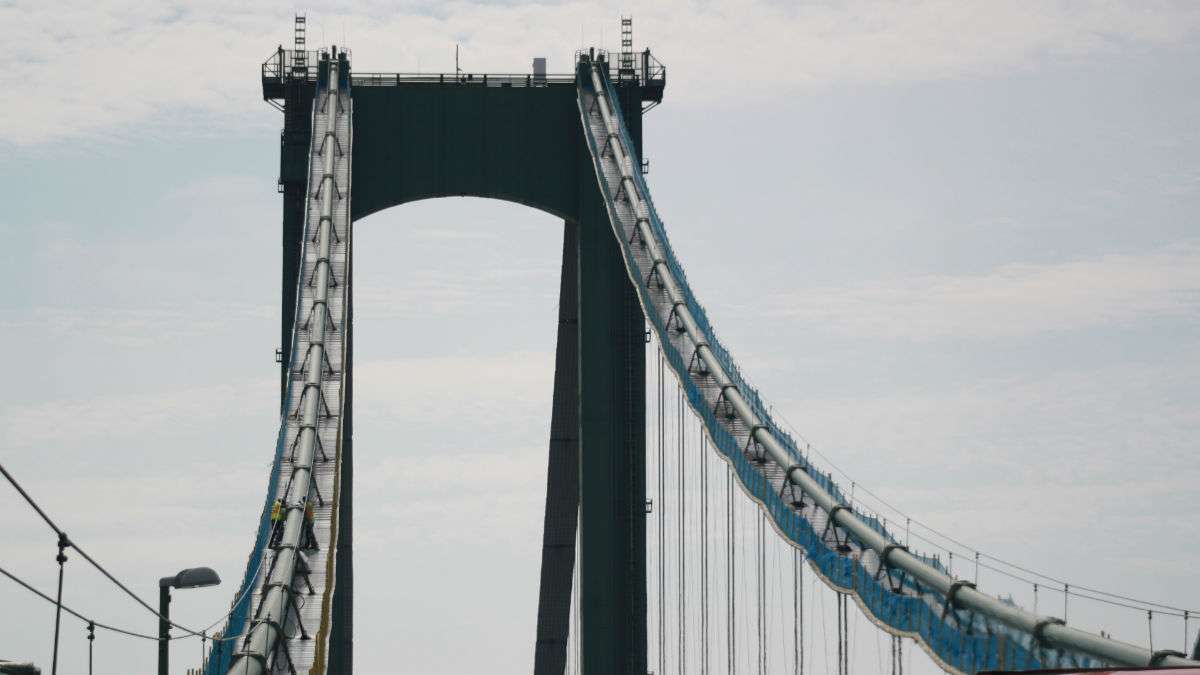
-

Workers wrapped the main cables of the Delaware Memorial Bridge before installing a dehumidification system to prevent corrosion. (Mark Eichmann/WHYY)
-
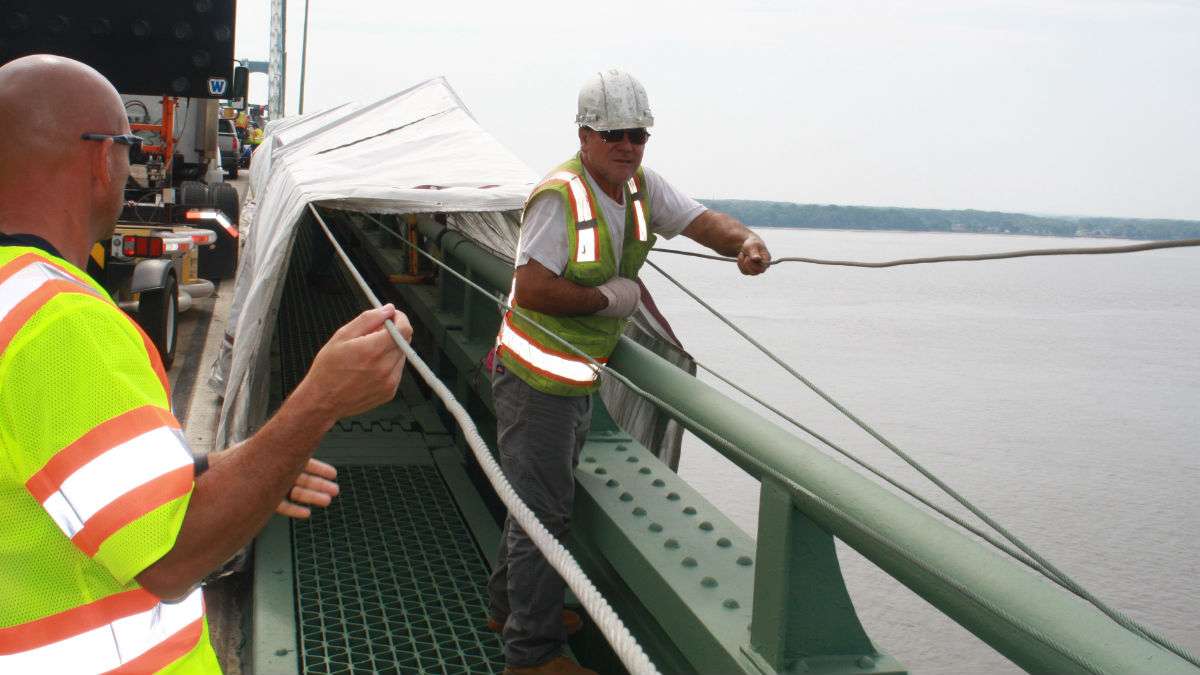
-
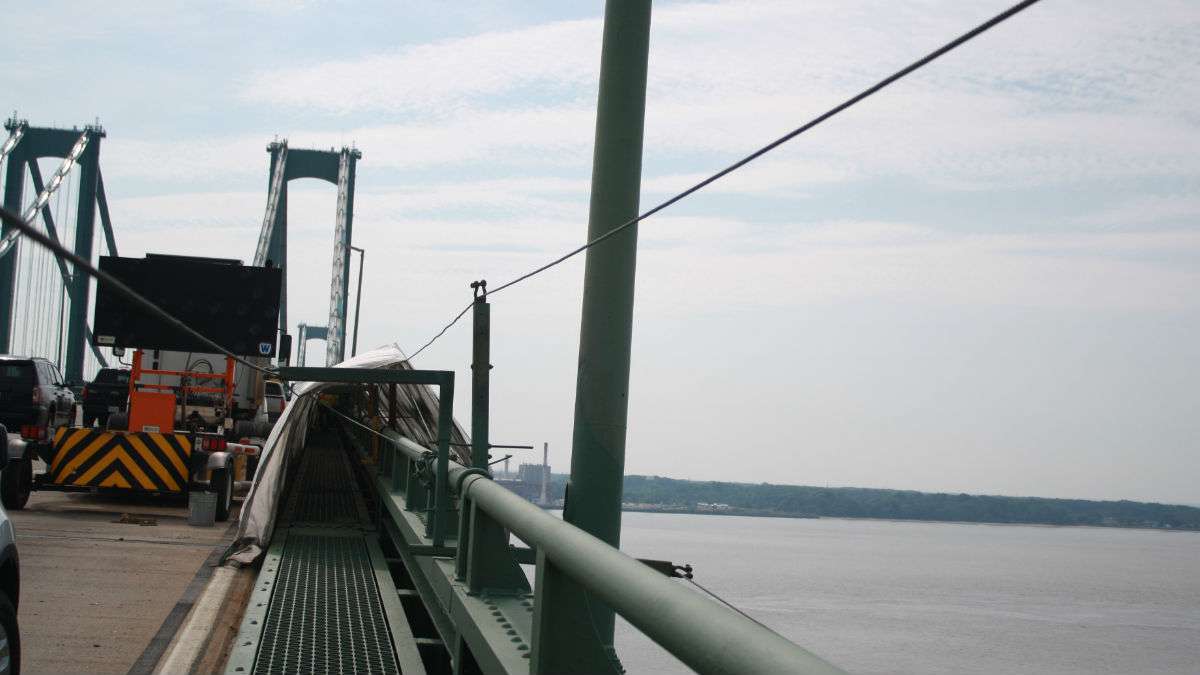
-

The twin span connecting Delaware and New Jersey is only the second bridge in the nation to be retrofitted with a corrosion fighting dehumidification system.
Finding funds to maintain the nation’s aging infrastructure has become a hot button issue in recent years. But there’s one aging icon of transportation infrastructure in Delaware that’s been going strong for more than 60 years, the Delaware Memorial Bridge. Keeping it in good condition, however, requires nonstop maintenance.
“We have the same problem that everybody else in the country does, we have aging infrastructure,” said Vince Meconi, chief operations officer for the Delaware River and Bay Authority which runs the bridge. “Our two bridges were built in 1951 and 1968 … aging infrastructure requires a lot of time money and effort to keep it up to date and keep it running.”
Nearly 18 million toll-paying vehicles crossed the Delaware Memorial Bridge in 2016. That beat the record set in 2015. This year could set another record for the southernmost hard-crossing of the Delaware River joining Delaware and New Jersey.
The bridge has been popular with drivers ever since it opened more than 60 years ago. When it was built, it was the sixth longest bridge in the world. The single span saw so much traffic, a second span was planned and completed just 17 years later.
No one back then could have imagined the technology now used to monitor and maintain the twin span. The Delaware River and Bay Authority recently deployed a new drone that can fly and “swim” underwater to inspect the bridge.
Dehumidification system and other improvements
New technology is being added to the bridge structure itself. The bridge is only the second in the nation to be retrofitted with a dehumidification system to reduce corrosion along the main cable supports
“The main cables are made of steel, and the number one problem that we have to prevent on our bridge is we want to prevent corrosion,” said Joseph Gibbons, DRBA maintenance director. “The dehumidification project is being installed to protect those main cables from corrosion, and to slow it down almost to a negligible point so that hopefully the cables will last for many, many generations.”
With a price tag of $33 million, the dehumidification project will seal the main bridge cables in air-tight wraps that will ensure little to no moisture can corrode the cables.
“The new dehumidification system is designed to operate as efficiently as possible while keeping the [DRBA’s] long term maintenance requirements to a minimum,” DRBA Chief Engineer Shoukry Elnahal said. Sensors will also be installed along the cables to ensure the system is functioning properly.
The dehumidification effort is part of a major upgrade plan for the bridge.
“We have for the last two years had a capital improvement program of almost $100 million and frankly, you’re going to see that for the next five to ten years, the same volume of work,” Meconi said.
In addition to that protective system, a new lighting system has been installed and new electronic toll collection equipment is being installed. Those toll lanes provide a critical source of revenue to fund all of the maintenance and upgrades.
“All of our money comes from the authority, from toll revenues from the bridge, from fees that we charge our customers who ride on the ferries and landing fees at the airports, we do not use any taxpayer dollars,” Meconi said.
The DRBA’s maintenance work doesn’t stop at the toll plaza either. It stretches about six miles along I-295 towards the I-95 interchange. That area is in the middle of a massive overhaul that’s caused plenty of delays for drivers.
“Although we have always maintained, or almost always maintained two travel lanes, the problem is when you have an accident, and we do have accidents once and while, then you are basically restricting traffic to one lane and things start backing up very quickly,” Meconi said.
The I-295 project should be done by late 2018.
Future projects
So what does the future hold for the Delaware Memorial Bridge? Nonstop maintenance and upgrades.
Later this year and into next year, workers will replace the “pin and link” system on the bridge. That’s the primary connection point between the structure of the bridge deck and the massive towers supporting the suspension cable.
“I think in the next 10 to 15 years, you’re probably going to see a major redecking of the bridges. That’s a huge, huge undertaking, very expensive, very lengthy undertaking, but again, given the age of the bridge, you’re going to have to see that,” Meconi said.
There’s also plans for some added protection in the river. Bumpers will be built in the Delaware River around the base of the bridge towers. The collision protection system currently in place was designed for smaller ships than those that currently pass under the bridge.
“Today’s barges and ships are much bigger than they used to be when the bridge was constructed, so we’re going to construct an advanced ship collision system,” Meconi said. “So if a ship should stray off course, and hit one of the pillars it would not damage the bridge.”
Meconi said the DRBA will likely have to make that $40 million-plus investment in the next few years.
All this work is part of the effort to help more than 70,000 drivers who use the bridge every day, stay on the move.
“The Delaware Memorial Bridge is iconic, it’s one of the largest twin spans in the world. But part of our goal is, we want to enhance the lifespan of that bridge,” Gibbons said.
With all the upgrades and investments going in, DRBA officials expect the Delaware Memorial Bridge to be in business for another at least another hundred years.
WHYY is your source for fact-based, in-depth journalism and information. As a nonprofit organization, we rely on financial support from readers like you. Please give today.




